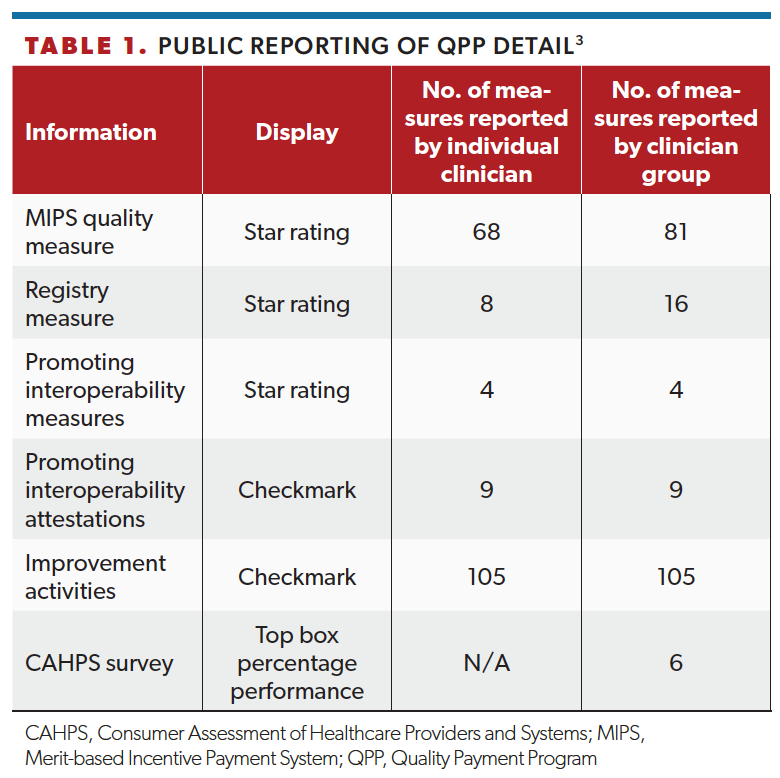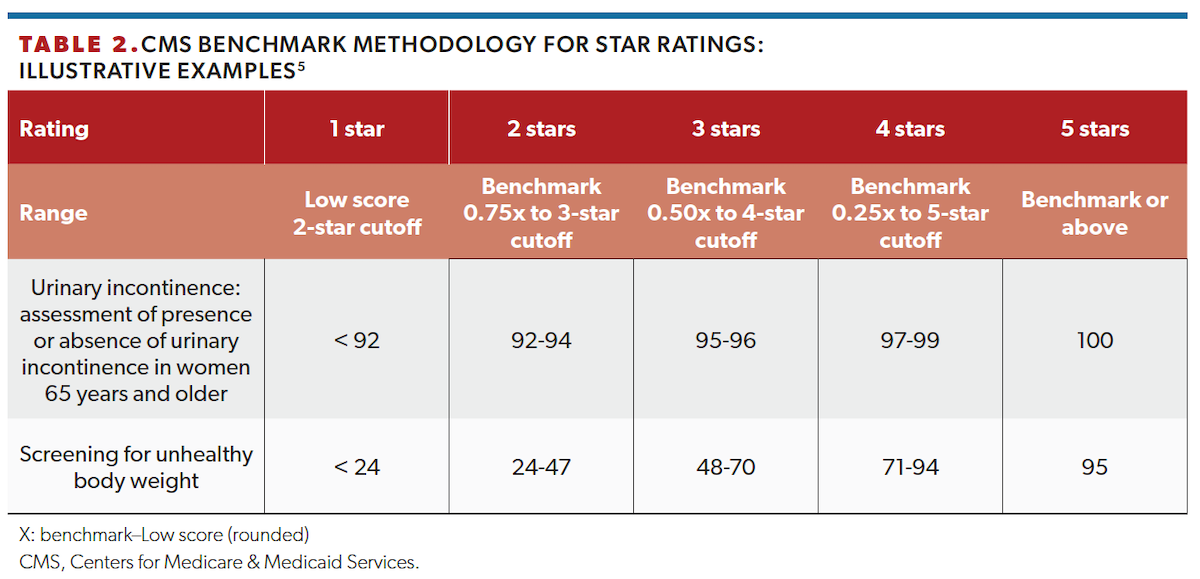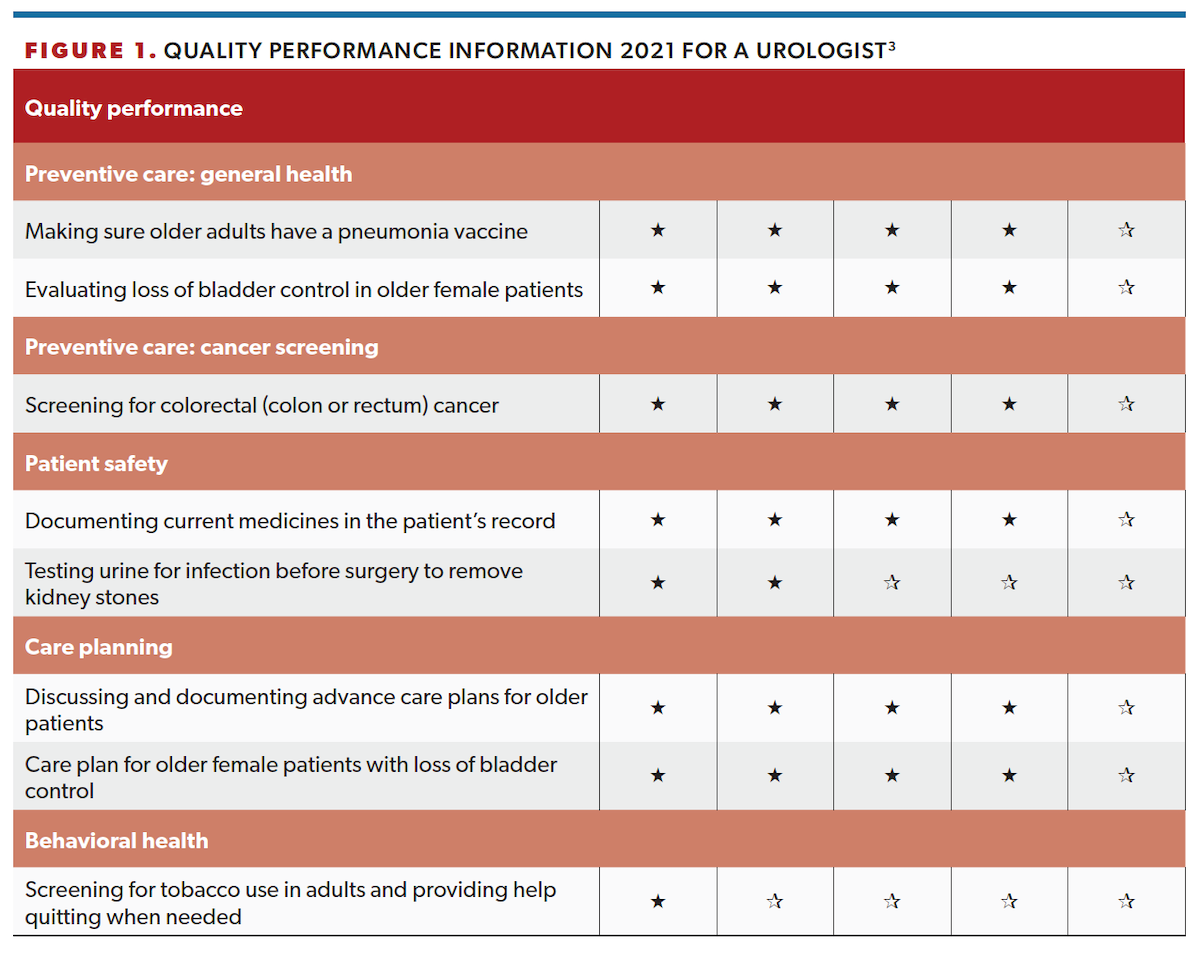Publication
Article
Urology Times Journal
Are you viewing your information on Care Compare?
Author(s):
EHR measures are an indicator of how technology friendly your practice is.
Robert A. Dowling, MD

The Affordable Care Act and the payment reform legislation (Medicare Access and CHIP Reauthorization Act of 2015) that created the Quality Payment Program (QPP) authorize the Centers for Medicare & Medicaid Services (CMS) to publicly report QPP performance information for doctors, clinicians, and groups. The reporting is currently done through the Care Compare website, which allows beneficiaries to view comprehensive information about doctors, hospitals, and other providers. The extent to which Medicare beneficiaries actually view and use this information to select a physician, compare potential selections, or monitor their existing physicians is largely unknown. A secondary purpose of public reporting is to incentivize clinicians to maximize their performance on quality and cost measures and in doing so improve public health; whether public reporting has had this intended impact is debatable. Physicians have concerns about the accuracy of data and whether the data reflect their performance on factors under their control.1 In this article, I will review the current status of public reporting and how it is relevant to your participation in the QPP.

Public reporting in the QPP dates to performance year 2017 and is released 2 years after the performance year; CMS just released the 2021 performance results. Only a subset of measures that meet statistical standards, have valid benchmarks, and that “resonate with Medicare patients and caregivers” are included.2 Cost measures are currently not displayed. In general, performance information is displayed as a star rating (1-5 stars), an attestation checkmark, or a top box percentage on survey instruments (Table 13). The methodology for the star rating system requires some explanation if one is to understand the basis for comparing one clinician with their peers. (This is not star rating assigned by patients.) CMS begins by calculating a “benchmark” for a particular measure. This benchmark is the mean score of the top-ranked providers on 10% of the eligible patient population (not the provider population). Providers that meet or exceed this benchmark are given 5 stars and providers below the benchmark are assigned to the remaining 4-star groups on the basis of the difference between their score and the lowest performance score on the measure. In other words, the benchmark is an average of top performers, not all performers, and as such is designated by
5 stars.4 See Table 25 for examples.

What does the information actually look like on the website? The Care Compare site is structured as a query tool for patients who are searching for a provider. Users enter basic search information such as zip code, specialty, and optional name or other keywords. This will direct them to a list of profile pages that meet the criteria and have the actual clinician information. A typical profile will include basic demographics, practice locations, education and board certification, group and hospital affiliations, and alternative practice model affiliations, if any. New this year is an indicator for telehealth services. If performance data are available for the clinician or group, it is displayed with star ratings and plain English–language descriptions of the measure and score meaning. Figure 13 shows the actual quality performance information of a urologist in year 2021. Note the familiar, “generic” quality

measures for this urologist: pneumonia vaccination, screening for colon cancer, documentation of current meds, screening for tobacco use. This provider had 2 stars on a urology-specific measure: a preoperative urinalysis before stone surgery. An interested patient could expand the online description of that measure and read: “An untreated infection can increase the risk of serious complications during kidney stone removal. It’s important that patients get tested for urinary tract infection and clinicians treat any existing infection before kidney stone removal surgery.” That information

might not resonate with the Medicare beneficiary looking for an incontinence specialist, but it might be relevant to the patient looking for a stone surgeon. The electronic health record (EHR) technology performance measures are likely to resonate with the majority of patients as they reflect the common provider workflows of prescribing medicines, sending summaries of care, and use of the portal to view, download, and transmit their information (Figure 25).
The bottom line and why it matters
Public reporting of QPP measures is now in its fifth year and includes performance information on most common measures and activities. Most urologists have some performance information in their profile. Although it is unclear how much impact publication has had on changing clinician behavior or improving public health, it seems likely that some Medicare beneficiaries look at this information and make decisions based on these ratings. The overall QPP composite score will determine professional fee schedule increases only in Medicare, but the individual measure scores will be visible to anyone who uses Care Compare; a savvy consumer can use Care Compare for personal research even if they are not on Medicare. All providers are given an opportunity to preview their information before it is published—be sure to do so and pay particular attention to the EHR measures, as they may resonate most with patients looking for a technology-friendly practice. Log on to Care Compare(bit.ly/3Fw381b) to view your latest performance information and understand the connection between your EHR habits and the corresponding display on this public-facing tool. •
References
1. James J. Public reporting on quality and costs. Health Affairs. March 8, 2012. Accessed March 16, 2023. https://www.healthaffairs.org/do/10.1377/hpb20120308.53696/
2. Quality Payment Program (QPP) performance information published on Medicare Care Compare: 2021 doctors and clinicians public reporting. Centers for Medicare & Medicaid Services. March 2023. Accessed March 16, 2023. https://bit.ly/3yLSFuW
3. Find & compare providers near you. Medicare.gov. Accessed March 16, 2023. https://bit.ly/3Fw381b
4. Doctors and clinicians star ratings on Medicare Care Compare: 2021 public reporting. Centers for Medicare & Medicaid Services. March 2023. Accessed March 16, 2023. https://bit.ly/3LtVoRh
5. Medicare Care Compare clinical star rating cut-offs – 2021 public reporting. Centers for Medicare & Medicaid Services. 2021. Accessed March 16, 2023. https://bit.ly/3ZpzSQF

Newsletter
Stay current with the latest urology news and practice-changing insights — sign up now for the essential updates every urologist needs.
































